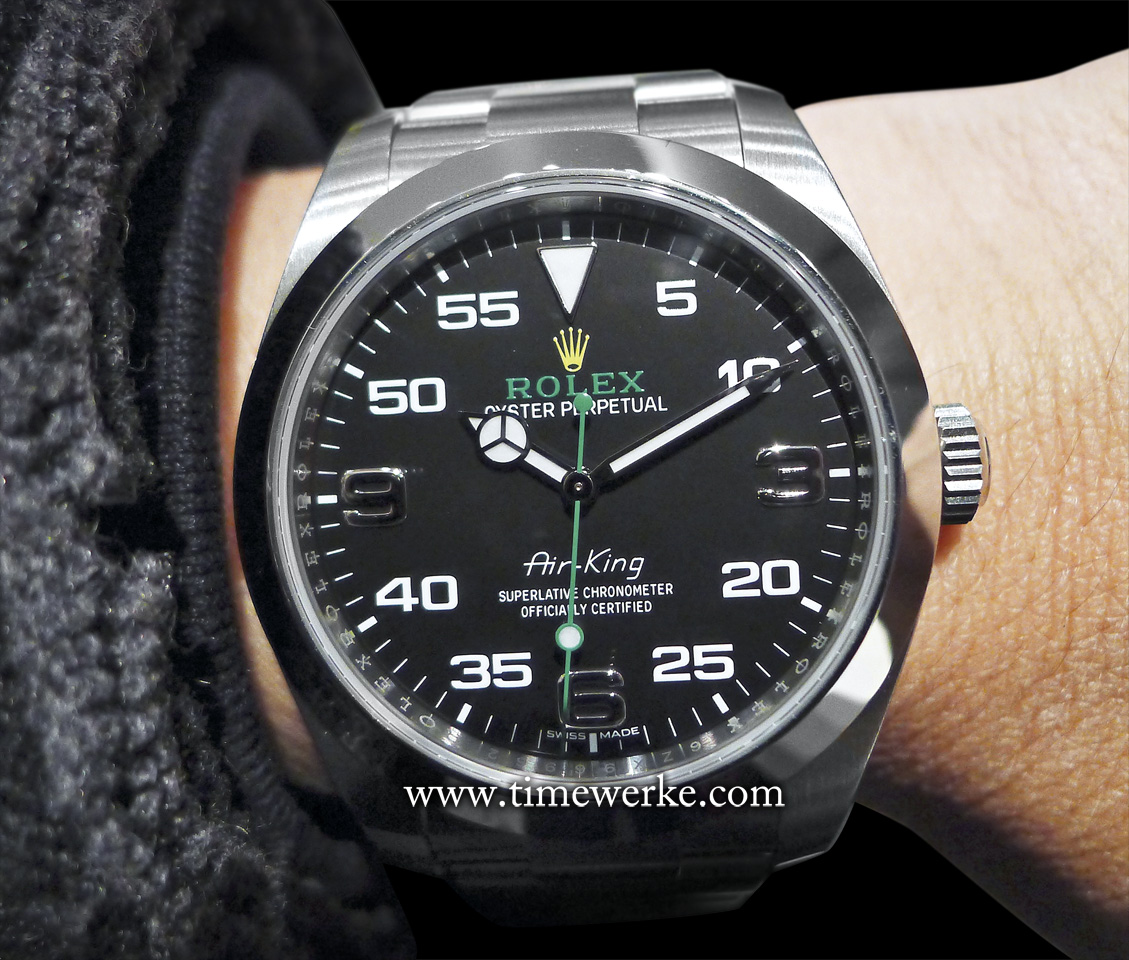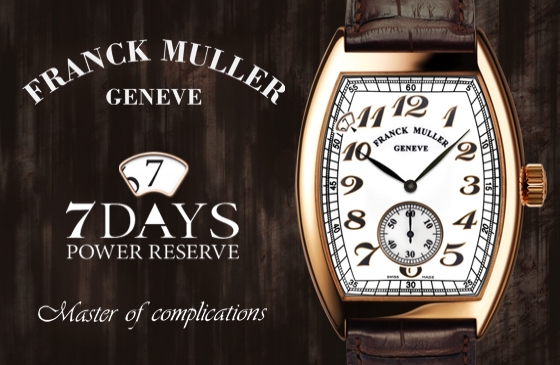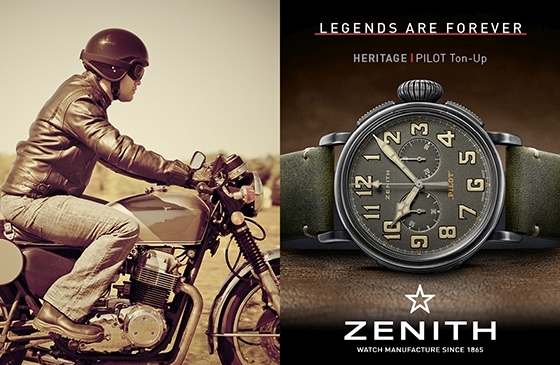
Rolex Air-King in 40mm stainless steel. Introduced in 2016. Reference (case – bracelet): 116900 – 71200. Powered by the Manufacture Rolex Calibre 3131 automatic movement, COSC-certified. Superlative Chronometer (COSC and Rolex certification after casing). Water-resistant to 100m (330 ft). Photo: © TANG Portfolio / TimeWerke.
The Rolex Air-King, introduced at the 2016 BaselWorld watch fair, has prominent features such as the 3, 6 and 9 Arabic hour numerals, combined with the smaller numerals for the minutes (in five-minute intervals, that is 5, 10, 20, 25, etc).
What is probably more appealing for collectors is the “Air-King” lettering; these are the same fonts used for the model in the 1950s.
According to Joseph Lavender, author of the article The Complete History of the Rolex Air-King, the founder of Rolex, Hans Wilsdorf, honoured RAF pilots of the Battle of Britain with a series of aviation-themed watches.
These “Air” series included the Air-Lion, Air-Tiger and the Air-King. Today, only the Air-King remains.
Interestingly, with regards to the Second World War, Lavender also mentioned that Rolex supplied their SpeedKing watches or other models on credit to British POWs (prisoners of war).
Lavender also states that the first “true Air-King was introduced in 1945 with the 4925, the follow-on to the 4365 of “Air” models. The progression for the international market from 4925/4365 (sub-seconds), 44999, 6552, 5500 and others.
The year 1957 is the year of the reference 5500, says Giorgia E Guido Mondani in the book Rolex and it was launched with different names such as Air-King, Metropolitan, Explorer and Everest.
For Rolex, the new Air-King is a tribute to aviation pioneers and the Oyster’s role in the epic story of airflight. This is because Rolex Oyster watches had accompanied aviators in some of history’s most significant flights.
In 1933 for example, the Oyster was with the Houston expedition, the first-ever flight over Mount Everest at the altitude of 10,000 metres (33,000 feet) in extreme weather.
In 1934, Owen Cathcart-Jones and Ken Waller made a return voyage from London to Melbourne (Australia) in record time flying in a twin-engine De Havilland Comet, using a Rolex Oyster as their on-board chronometer.


